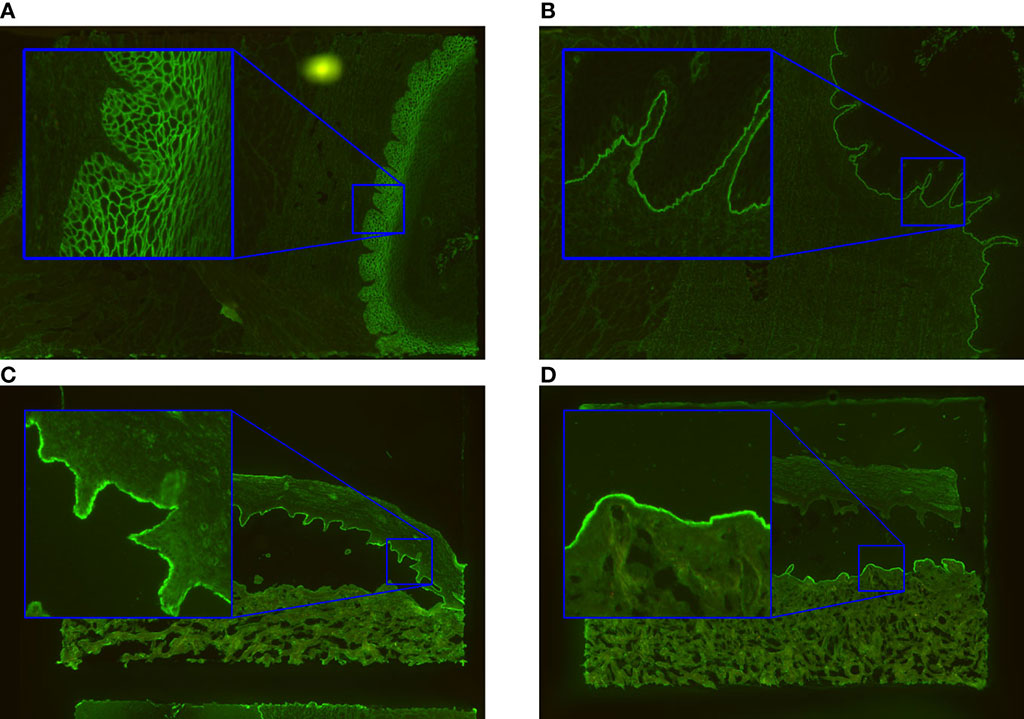Automated Microscope Classifies IIF Patterns in Autoimmune Dermatoses
Posted on 02 May 2023
Autoimmune bullous dermatoses (AIBD) are a diverse group of autoantibody-driven conditions characterized by blistering and erosion of the skin and mucous membranes, including pemphigus diseases, pemphigoid diseases, and dermatitis herpetiformis. Differentiating between disease sub-types is essential for making treatment decisions. Indirect immunofluorescence (IIF) microscopy using tissue sections of the esophagus and salt-split skin is one of the most sensitive screening methods for initially differentiating AIBD. IIF on esophagus identifies autoantibodies against epithelial and endomysial antigens, while IIF on salt-split skin differentiates autoantibodies against the basement membrane zone. However, interpreting the complex IIF patterns can be challenging and is not well standardized.
In a joint study, scientists at EUROIMMUN (Lübeck, Germany) and the University of Lübeck (Lübeck, Germany) have developed and assessed a computer-aided system for classifying IIF patterns on esophagus and salt-split skin samples. The scientists created the training datasets by incubating biochip slides containing millimeter-sized tissue sections with various dilutions of patient serum samples and controls. Subsequently, the team used the EUROPattern Microscope 1.5 to acquire images. The results of the computer-aided evaluation were compared with findings from manual evaluations by experienced IIF technicians.

Automated IIF evaluation on esophagus and salt-split skin presents a challenge, as the small structures necessary for classification are only present in certain areas of the tissue substrates. Standard deep networks are not suitable for processing these images due to computer memory limitations and the number of available training images. Consequently, the researchers employed segmentation to focus the classification networks on the essential regions. The developed algorithms demonstrated high accuracy for pattern classification on esophagus and salt-split skin, with over 95% agreement with visual reading results. The positive predictive agreement was above 97% for all positive IF patterns on both tissue substrates, while the negative predictive agreement was at least 95% for all patterns.
The researchers concluded that deep networks can be adapted for evaluating complex tissue substrates by incorporating the segmentation of relevant regions into the prediction process. These classifiers offer an excellent enhancement to AIBD screening methods and can reduce the workload for professionals when interpreting tissue sections in IIF testing.
Related Links:
EUROIMMUN
University of Lübeck














